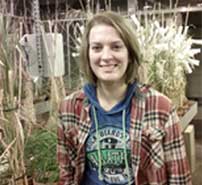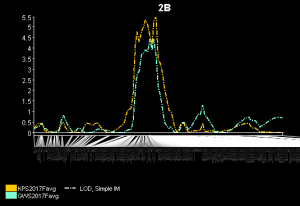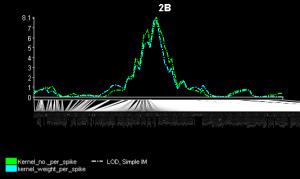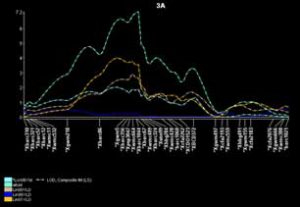 |
Co-PI: Justin Faris justin.faris@ars.usda.gov |
 |
Ph.D. student: Amanda Petersamanda.r.peters@ndsu.edu |
Chromosome 2BL QTL for Kernels per Spike and Grain Weight per Spike
Amanda and Justin are working on validating, dissecting, characterizing and deploying a QTL for kernels per spike (KPS) and grain weight per spike (GWS) on chromosome 2BL, which was identified in a population of tetraploid wheat derived from the durum variety Ben crossed with an accession of cultivated emmer wheat (PI 41025). This population has been studied under both greenhouse and field conditions. On average, Ben alleles at this locus confer and increase of 5 more kernels per spike and 0.25 g more per spike. The QTL is flanked by the SNP markers IWA1217 and IWA652, and is at approximately 453 Mb to 491 Mb in the CS v1 reference. High-resolution mapping populations were developed from backcrossing two RILs containing the PI 41025 alleles in the target region to Ben for a total of three backcrosses. The BC3F2 will be used for high-resolution mapping and gene discovery. Additionally, this QTL is being introgressed into local germplasm along with CIMMYT high biomass lines.
 |
 |
| Chromosome 2BL QTL derived from Ben under field conditions | Chromosome 2BL QTL derived from Ben under greenhouse conditions |
Two additional durum x cultivated emmer RI populations, along with the population discussed above, are being evaluated under greenhouse and field conditions for multiple yield components, such as KPS, GWS, spikelets per spike, thousand kernel weight, days to heading, plant height, grain area, grain length, and grain width. If agronomically important QTL are identified, user friendly markers will be developed for these regions.
Chromosome 3A Yield QTL
Amanda and Justin are also collaborating with Stephen Baenziger, University of Nebraska-Lincoln, to fine map a QTL for high grain yield derived from the winter wheat variety Wichita (WI). Using a population of recombinant inbred chromosome lines (RICLs) derived from a cross between the winter wheat variety Cheyenne (CNN) and CNN with a WI chromosome 3A substitution [CNN(WI 3A)], the QTL has been found to be expressed mainly in the relatively high moisture environment near Lincoln, NE, and less so in more arid environments. Therefore it is known to be affected by GxE interactions. The QTL has only been validated in one other background of winter wheat and no backgrounds of spring wheat.
 |
Chromosome 3A Yield QTL derived from Wichita |
We have identified a RICL harboring WI alleles for the QTL and CNN alleles for the remainder of the chromosome, and have crossed it to CNN to develop a large F2 population for high-resolution mapping. This population should be ideal because the only polymorphism that will exist will be in the target region because the rest of the background is homogeneous for CNN. We are utilizing the exome capture data to develop additional markers for this region for future mapping populations. We may pursue this population further to delimit this QTL region if the chance arises in the future.
